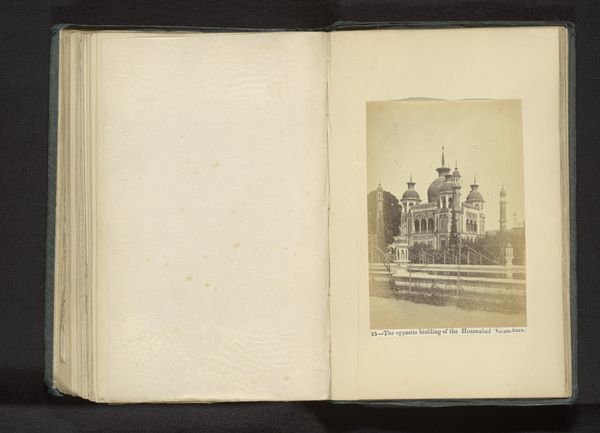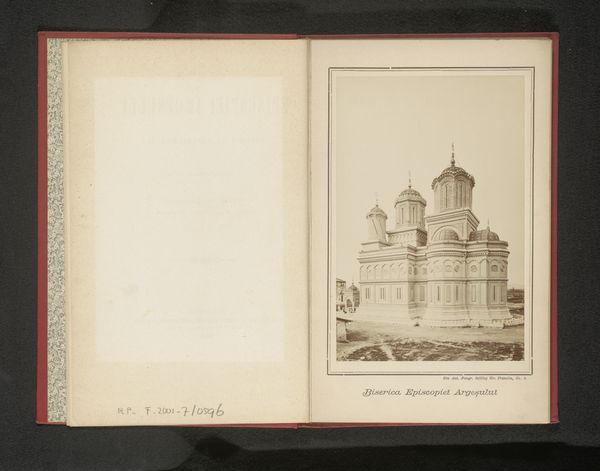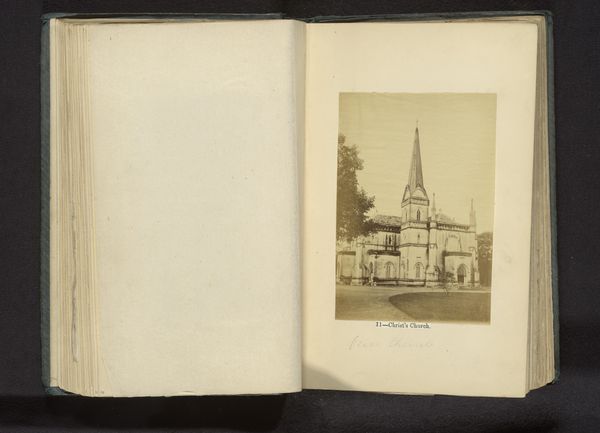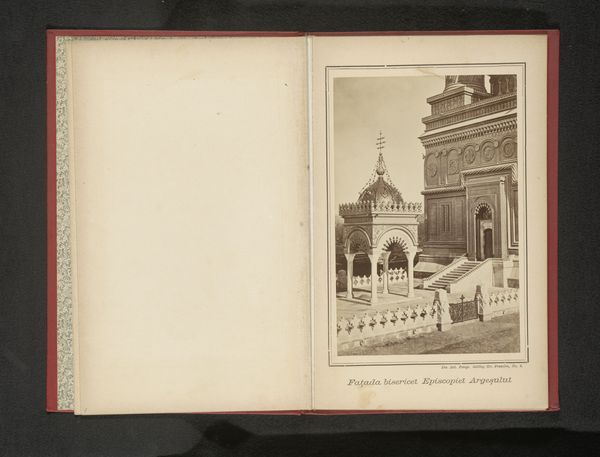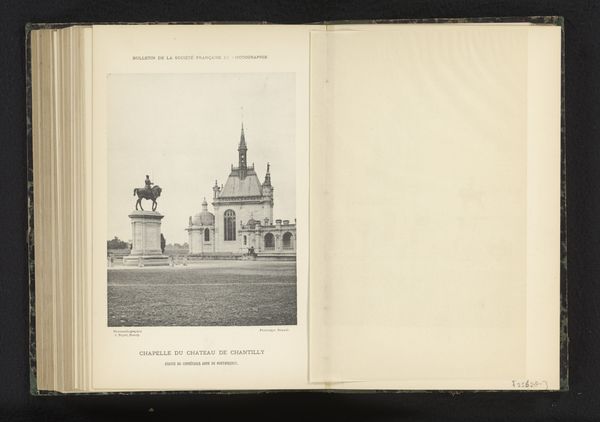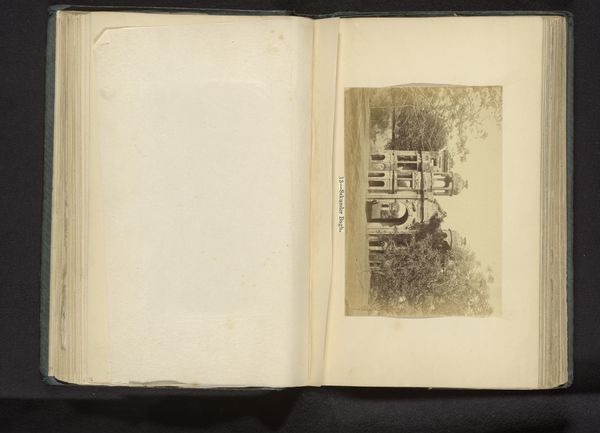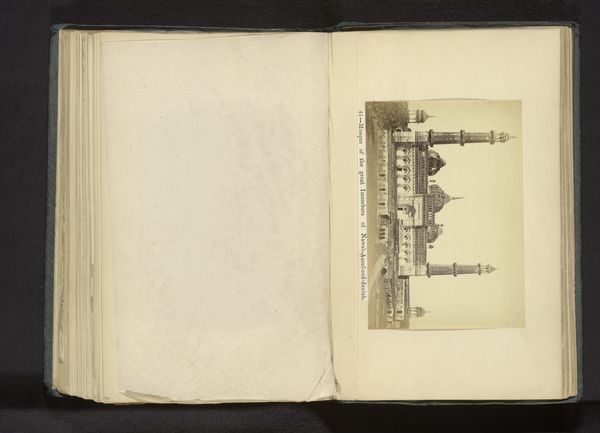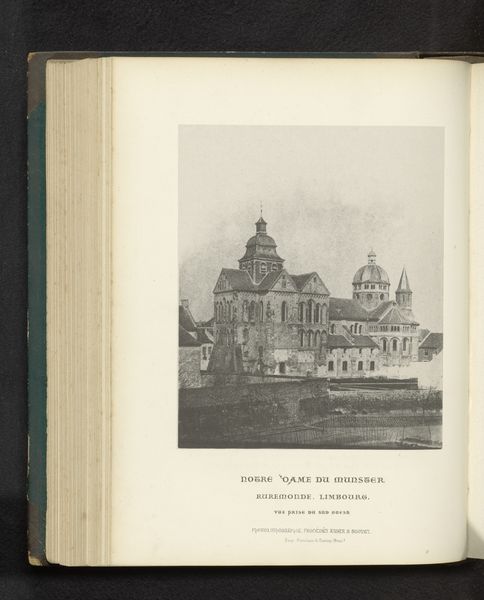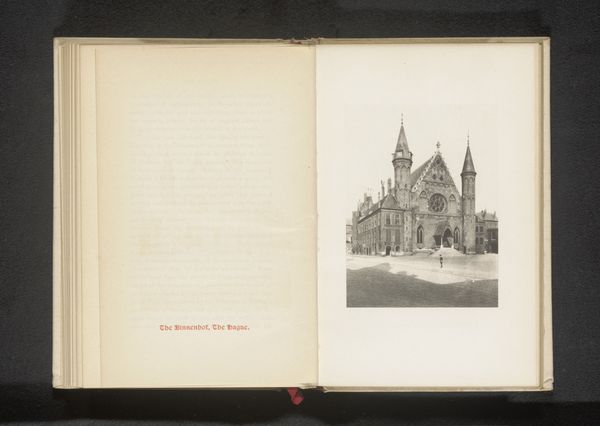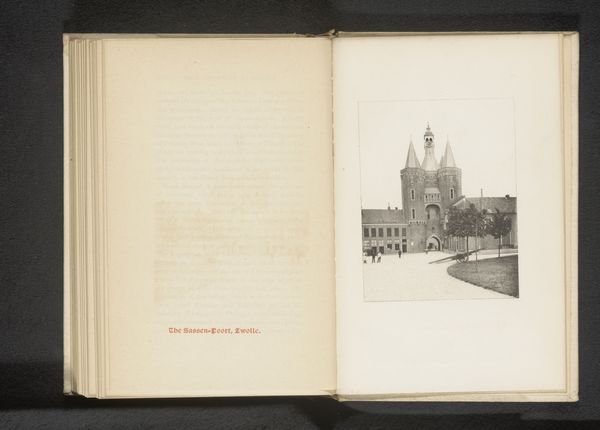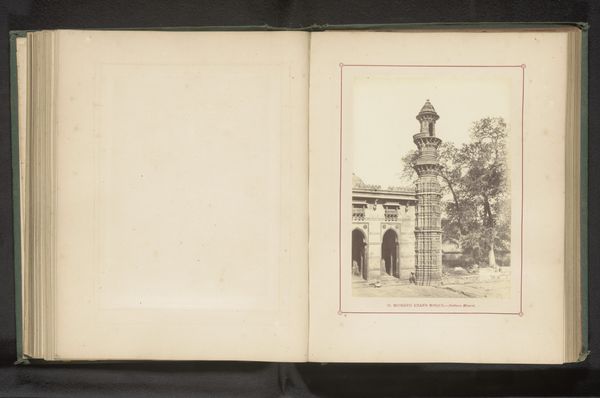
print, photography, site-specific, albumen-print
# print
#
landscape
#
photography
#
orientalism
#
site-specific
#
islamic-art
#
albumen-print
Dimensions: height 153 mm, width 105 mm
Copyright: Rijks Museum: Open Domain
Editor: Here we have a captivating albumen print dating back to before 1874, titled "Tombe voor de vrouw van Saadat Ali Khan in Lucknow," credited to Darogha Ubbas Alli. What strikes me is how it's presented as part of an open book. It feels almost voyeuristic, as if we're peeking into a personal travel diary. What stories do you think this photograph whispers to us? Curator: Ah, yes, the whispering. It speaks to me of forgotten grandeur, doesn't it? This isn’t just a picture; it’s a portal. Consider the photographer, Alli, carefully curating this album. Each image is a fragment of a story he wishes to tell, steeped in orientalism but captured through a local lens. Does the presentation within the album change your interpretation, do you think? Editor: Absolutely. Knowing it's from an album adds layers. It transforms from a simple architectural record into a piece with a narrative, an intention. What exactly do you mean by "orientalism" in this context, though? Curator: The East, seen through a Westernized, sometimes romanticized, gaze. Though, in this case, it's more complex, a dance between local and colonial perspectives. Think of it as a staged encounter; Alli, capturing a space laden with personal history for consumption beyond its locality. It’s less about pure representation, more about conjuring an experience. What feeling does it evoke in you now? Editor: Now I see a tension – between reverence for the site and an imposed foreign gaze. I notice also, how the tomb seems isolated and pristine. Maybe the picture is revealing what was *chosen* to be recorded about the monument. That in itself becomes pretty interesting! Curator: Exactly! It’s about curated silences as much as what’s overtly shown. Consider how history can become like echoes in these tombs; photographs allow us to hear them, although we might not be hearing them "right." Perhaps a distortion can bring a certain perspective that’s all its own. Editor: Food for thought – it will take me a while to unravel. Thanks for unraveling a little of that with me today!
Comments
No comments
Be the first to comment and join the conversation on the ultimate creative platform.
